
Earlham College is a private liberal arts college in Richmond, Indiana. The college was established in 1847 by the Religious Society of Friends (Quakers) and has a strong focus on Quaker values such as integrity, a commitment to peace and social justice, mutual respect, and community decision-making. It offers a Master of Arts in Teaching and has an affiliated graduate seminary, the Earlham School of Religion, which offers three master's degrees: Master of Divinity, Master of Ministry, and Master of Arts in Religion.
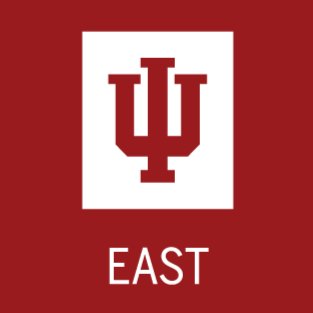
Indiana University East is a public university in Richmond, Indiana, a regional campus of Indiana University that serves the eastern Indiana and western Ohio area. Established in 1971 by the Indiana University Board of Trustees, IU East enrolls over 4,000 students on its five-building, 174-acre campus and in online classes. IU East has 60 academic degree programs, offering bachelor's and master's degree programs and certificates in areas of Business and Economics, Education, Humanities and Social Sciences, Natural Science & Mathematics, Informatics, General Studies, Nursing and Health Sciences, and Social Work.

Warder Clyde Allee was an American ecologist. He is recognized to be one of the great pioneers of American ecology. As an accomplished zoologist and ecologist, Allee was best known and recognized for his research on social behavior, aggregations and distributions of animals in aquatic as well as terrestrial environments. Allee attended Earlham College and upon his graduation in 1908, pursued advanced studies at the University of Chicago where he received his PhD and graduated summa cum laude in 1912. Allee's most significant research occurred during his time at the University of Chicago and at the Marine Biological Laboratory at Woods Hole in Massachusetts. His research findings led to many publications, with the most notable being Principles of Animal Ecology and Animal Aggregations. Allee was married to author Marjorie Hill Allee and remained active in the field of biology until his death in 1955 at the age of 69.

The Oneida Institute was a short-lived (1827–1843) but highly influential school that was a national leader in the emerging abolitionist movement. It was the most radical school in the country, the first at which black men were just as welcome as whites. "Oneida was the seed of Lane Seminary, Western Reserve College, Oberlin and Knox colleges."
The International Moral Education Congress was an international academic conference held in Europe six times between 1908 and 1934. It convened because of an interest in moral education by many countries beginning a decade before the inaugural event. The movement for moral education had an ardent champion in the Ethical movement. The idea to hold the congress was at the behest of the International Union of Ethical Societies; its greatest proponents were Professor Friedrich Wilhelm Foerster and Gustav Spiller, the secretary of the Union. The first congress was held in 1908, and except for one 10-year beak (1912–1922), the congress met every four years in various cities. The official languages were German, English, and French.

Monticello Seminary, founded in 1835, was an American seminary, junior college and academy in Godfrey, Illinois. The 215 acres (87 ha) campus was the oldest female seminary in the west, before it closed in 1971. The buildings are now part of Lewis and Clark Community College.
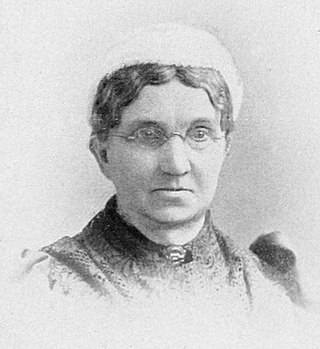
Elizabeth Watson Russell Lord was an American educator and philanthropist from the U.S. state of Ohio. She was a charter member of Deoon-ga-wa Chapter, Batavia, New York. For two years, she was superintendent of the state institution for the blind at Batavia. She received her master's degree from Oberlin College in 1901; and served there as Assistant Principal, Women's Department, 1884–94, as well as Assistant Dean, Women's Department, 1894–1900. She was the Chief Donor of the school's Lord Cottage.

Esther Pugh was an American temperance reformer of the long nineteenth century. She served as Treasurer of the National Woman's Christian Temperance Union (WCTU), a Trustee of Earlham College, as well as editor and publisher of the monthly temperance journal, Our Union.
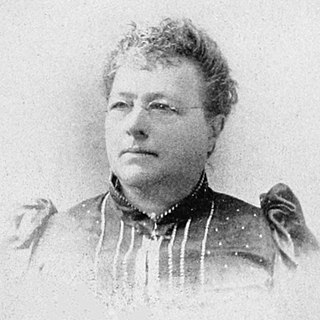
Emma Pike Ewing was an American author and educator on housekeeping and cooking. Ewing hailed from New York. After the American Civil War, she served as dean, Chautauqua Assembly Cooking School; professor domestic economy, Iowa Agricultural College; director Model School of Household Economics; and affiliated with Marietta College, Ohio, Model Home School of Household Economics. Her contemporaries included, Mary Johnson Bailey Lincoln, Marion Harland, Fannie Merritt Farmer, Sarah Tyson Rorer, Maria Parloa, Gesine Lemcke, Ella Morris Kretschmar, and Linda Hull Larned. Ewing was the author of several cookbooks such as Cooking and Castle-building (1880), Soup and Soup Making (1882), Bread and Bread Making (1883), Salad and Salad Making (1884), A Text-book of Cookery, for Use in Schools (1899), Cookery Manuals (1890), and The Art of Cookery: A Manual for Homes and Schools (1896). She died in 1917.

St. Clara Female Academy was a 19th-century American parochial school, a Roman Catholic institution, in Wisconsin. After a series of changes, it is now known as Dominican University.
A manual labor college was a type of school in the United States, primarily between 1825 and 1860, in which work, usually agricultural or mechanical, supplemented academic activity.
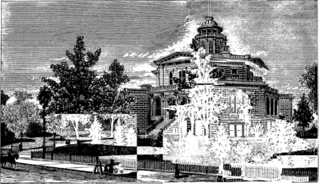
Chaddock College was located in Quincy, Illinois. Initially known as the German and English Methodist Academy, the school was renamed Johnson College for a short time before it was organized and chartered as Chaddock College in 1878. In 1899, it was reorganized again as Chaddock Boys’ School.

The Union Literary Institute, located in rural Randolph County, Indiana, at 8605 East County Road 600 South, Union City, Indiana, was a historic school founded in 1846 primarily for blacks by abolitionist Quakers and free blacks in three local communities. Only white students were allowed to attend the public schools in the state. The term "literary institute" at the time meant a non-religious school.

College Temple was a 19th-century non-sectarian American female college located at Newnan, Georgia, 40 miles (64 km) from Atlanta. Founded in 1854, it closed in 1888, and its founder, Professor M. P. Kellogg, died the following year.
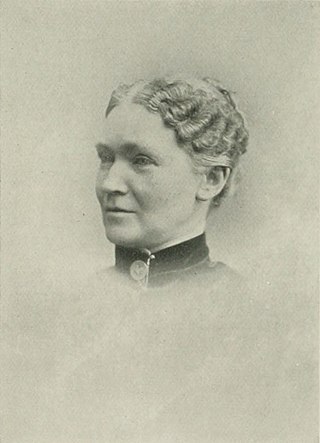
Emily Caroline Chandler Hodgin was an American temperance reformer. She was one of the leaders in the temperance crusade of Terre Haute, Indiana, in 1872, and was a delegate to the convention in Cleveland, Ohio, where the crusading movement developed into the organization of the Woman's Christian Temperance Union (WCTU). After that, she began the work of organizing forces in neighboring parts of Indiana. She became president of the WCTU in her own county and secretary of the State temperance association. She greatly aided the cause from the lecture platform, for though a member of the Society of Friends, she availed herself of the freedom accorded to the speaker in meetings.

Ruth Hinshaw Spray was an American peace activist. Spray was prominent as a teacher in the public schools and work for the protection of children and animals. She was also active in the work of child labor organizations and in the international peace cause, Woman's Christian Temperance Union (WCTU), Retail Clerks' Association, and other associations for public welfare.

Windom College is a former American parochial school in Montevideo, Minnesota. It is the second school established in southwestern Minnesota by the Congregational church. It was founded in 1885 with the hope that its students would take more advanced courses in Carleton College. Originally named "Western Minnesota Seminary", it became the "Windom Institute" in 1891 in honor of Hon. William Windom, United States Senator and Secretary of the Treasury, who was a member of the Congregational church in Winona, Minnesota, the earliest of the Congregational churches in southeastern Minnesota. The name change in 1912 to "Windom College" gave western Minnesota its first college. Windom College ended operations in 1923. Its building was purchased by and became the official home of the Masons of Montevideo.

Drusilla Wilson was an American temperance leader and Quaker pastor. She was the second president of the Kansas Woman's Christian Temperance Union (W.C.T.U.).

Mary Chawner Woody was an American Quaker minister, educator, and temperance leader. For ten years, she served as president of the North Carolina branch of the Woman's Christian Temperance Union (W.C.T.U.), 1884–1894. She was also a Friends minister.

Alabama Female Institute was one of the earliest educational institutions for women organized in Alabama. It opened in Tuscaloosa, in the fall of 1829, as "Sims' Female Academy". In 1831, it became the "Tuscaloosa Female Academy". The name change to Alabama Female Institute occurred in 1833, and this school was chartered in 1835. It continued to operate until 1873.



















